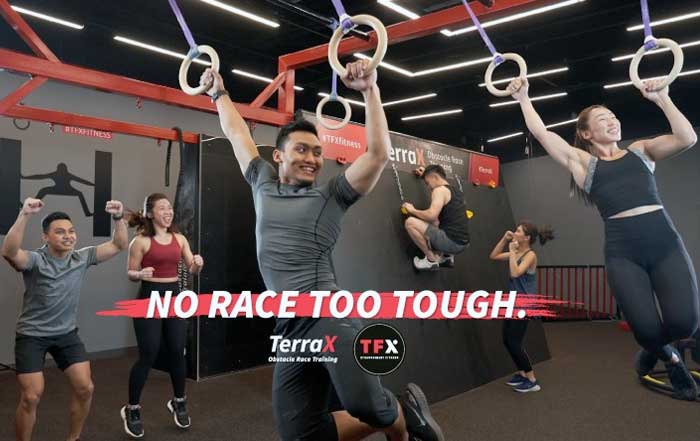Well, well, the global wellness economy has evolved far beyond traditional health care, encompassing a holistic ecosystem of physical, mental, emotional, and social well-being, so from wellness tourism and digital health startups to workplace wellness programs and AI-driven fitness platforms, the concept of “wellness” has become a trillion-dollar industry influencing how people live, work, and connect. For readers of Well New Time, understanding how these business models are shaping the future of health is essential, not just for consumers but also for entrepreneurs and policymakers navigating the rapid transformation of the global wellness marketplace.
The Global Wellness Institute (GWI) estimates that the global wellness economy surpassed $5.6 trillion by 2024, marking one of the fastest recoveries after the pandemic-era disruptions. This vast landscape integrates sectors like fitness, personal care, nutrition, workplace wellness, mental health technology, and sustainable living, redefining the meaning of prosperity and productivity in modern life. As more nations adopt well-being frameworks in policy and urban planning, the boundary between “health” and “wealth” continues to blur.
Modern wellness is not merely about physical fitness—it is a dynamic and diversified business domain that encompasses innovation, technology, inclusivity, and sustainability. From the rise of biohacking and longevity startups to the reimagining of public health systems, the global wellness industry is now a central driver of both economic growth and human progress.
Learn more about wellness and global trends.
The Evolution of the Wellness Economy
The idea of wellness as a marketable concept began in the late 20th century but gained monumental traction in the 2010s when wellness transitioned from luxury spa retreats to an accessible lifestyle movement. Over the past decade, the democratization of digital health platforms and increased public awareness about preventive healthcare reshaped the industry’s foundation. By 2025, wellness is deeply intertwined with sustainability, workplace innovation, and the digital economy.
Unlike the traditional healthcare system, which is reactive and disease-centered, the wellness economy emphasizes prevention, personalization, and long-term vitality. Companies such as WHOOP, Peloton, Calm, and Headspace Health have shown how digital platforms can make mindfulness, recovery, and performance optimization a part of daily life. Meanwhile, corporate wellness programs have become standard offerings across industries, particularly in regions such as the United States, the United Kingdom, and Singapore, where employers recognize that employee well-being directly correlates with productivity, innovation, and retention.
As global awareness expands, new forms of wellness economies are emerging in countries such as Japan, Germany, and Australia, where innovation and traditional health philosophies merge to form hybrid wellness systems. Japan’s focus on longevity, for instance, inspires bio-nutritional research and age-friendly design, while Germany’s precision engineering culture influences high-performance sports tech and medical wellness resorts.
Explore more about the intersection of business and health.
The Core Pillars of the Modern Wellness Economy
The wellness economy of 2025 rests on several core pillars—digital transformation, sustainability, accessibility, personalization, and collaboration. Each of these dimensions plays a vital role in driving how the sector scales globally.
Digital Transformation and the Tech-Driven Health Revolution
Technology has become the backbone of the wellness ecosystem. With the rise of wearable technology, telemedicine, AI-driven diagnostics, and virtual fitness platforms, the integration of data-driven health insights is reshaping how people manage their bodies and minds. According to McKinsey & Company, consumers increasingly demand seamless, integrated experiences that blend digital convenience with personalized care. Companies like Apple, with its Apple Health, and Google Fit are leading examples of how data ecosystems enable users to track everything from sleep cycles to heart rate variability.
Fitness platforms have evolved into comprehensive health companions. Applications such as MyFitnessPal, Fitbit Premium, and Strava have become essential for millions seeking to integrate activity tracking with mental well-being tools and nutritional advice. The growth of AI-based recommendation systems means consumers now receive real-time wellness plans adapted to their biometric and behavioral data. This data-centric approach transforms wellness from a static pursuit into a living, evolving feedback system that learns from every heartbeat, step, and breath.
Learn more about how fitness is shaping health innovation.
Sustainability as a Wellness Imperative
The 2025 consumer is conscious not only of personal well-being but also of planetary health. Sustainable business models—ranging from eco-friendly spas to zero-waste beauty products—are now integral to the wellness economy. Wellness brands such as Aveda, The Body Shop, and Lush have successfully merged sustainability with self-care, setting new standards for environmental accountability in beauty and personal care.
The rise of wellness real estate, where architecture incorporates biophilic design, clean air systems, and renewable energy, demonstrates how sustainability and well-being can coexist in everyday environments. According to the World Economic Forum, the shift toward green cities and sustainable housing will be a major determinant of wellness accessibility in the next decade.
For readers of Well New Time’s environment section, this integration between sustainability and health highlights how consumer behavior is influencing architecture, hospitality, and even urban policy. Modern wellness businesses are thus becoming agents of both ecological and social transformation.
Accessibility and the Global Wellness Gap
Despite its growth, the wellness industry still faces challenges related to inequality and accessibility. In developing economies across Africa, South America, and parts of Asia, wellness remains concentrated in urban centers or among the affluent. However, initiatives like WHO’s Universal Health Coverage (UHC) and community-based fitness programs are expanding access to preventive health care and wellness education.
Countries such as India and Brazil are emerging as wellness innovation hubs, leveraging technology to deliver affordable wellness solutions through mobile apps and public-private partnerships. The introduction of localized health ecosystems, community gyms, and digital wellness education is gradually narrowing the wellness divide, making preventive care more inclusive and culturally adaptive.
Readers interested in wellness equity can explore Well New Time’s world coverage, where global case studies reveal how wellness innovation can serve both profit and purpose.
The Business of Mindfulness and Mental Health
The global conversation around mental health has shifted from taboo to mainstream, propelled by digital access and cultural acceptance. By 2025, mindfulness is not a niche trend but a multi-billion-dollar segment of the wellness economy. Platforms like Calm, Headspace Health, and Insight Timer have normalized the practice of meditation, offering guided sessions for stress management, anxiety reduction, and improved sleep. What once belonged to yoga studios and spiritual retreats is now seamlessly integrated into corporate programs, schools, and even national health systems.
The explosion of mental health startups—many powered by artificial intelligence and behavioral science—has made therapy and emotional well-being more scalable. BetterHelp and Talkspace, for example, have extended access to licensed therapists through mobile platforms, particularly for individuals in remote or underserved areas. These digital services lower traditional barriers such as cost, stigma, and geography, bringing psychological support to millions worldwide.
Governments and corporations alike are realizing that mental wellness directly impacts economic productivity. The World Health Organization (WHO) estimates that depression and anxiety disorders cost the global economy over $1 trillion annually in lost productivity. Companies are therefore embedding mindfulness programs, resilience training, and psychological safety initiatives into their operations. The adoption of these frameworks is especially strong in regions like the United Kingdom, Australia, and Singapore, where forward-thinking corporate cultures emphasize well-being as a strategic priority rather than a luxury perk.
For those exploring workplace wellness frameworks and emotional resilience, Well New Time’s mindfulness section offers practical insight into global trends connecting psychological health with productivity and happiness.
Global Wellness Economy Dashboard
Interactive Overview of the $5.6 Trillion Industry
AI-Driven Personalization
Machine learning optimizing recovery, nutrition, and performance through real-time biometric data
Sustainability Integration
Eco-friendly products, circular economy models, and wellness real estate prioritizing planetary health
Corporate Wellness Evolution
Holistic employee programs addressing physical, mental, and social well-being dimensions
Longevity & Biotech
Precision nutrition, genetic testing, and functional foods transforming preventive healthcare
Cultural Globalization
International exchange blending ancient traditions with cutting-edge science across continents
Digital Therapeutics
Telemedicine and mobile platforms extending access to therapy and wellness coaching globally
Corporate Wellness Models and the Future of Work
In 2025, the workplace is no longer defined by four walls—it’s an ecosystem of hybrid collaboration, digital engagement, and human-centric policies. The new generation of corporate wellness models integrates physical, mental, and social dimensions into a unified employee experience. According to Deloitte’s 2025 Well-being Report, companies that prioritize employee well-being outperform their competitors in innovation, retention, and overall organizational health.
Multinational corporations such as Unilever, Google, and Salesforce have set global benchmarks by investing in holistic programs that address everything from ergonomics and nutrition to mental resilience and family support. These initiatives align closely with the growing societal expectation that employers should contribute to their workers’ overall life satisfaction. The modern employee seeks purpose, flexibility, and well-being at work—and businesses that deliver on these expectations enjoy measurable advantages in engagement and brand reputation.
Digital wellness platforms like Virgin Pulse and Wellable have become integral to modern human resource ecosystems, providing analytics-based insights that track employee engagement, stress levels, and physical activity trends. These platforms help organizations make data-informed decisions about workplace design, workload distribution, and burnout prevention. Companies adopting such tools demonstrate a commitment not only to productivity but also to creating meaningful and supportive work environments.
As seen in the Well New Time business section, these models represent a paradigm shift where “work-life balance” evolves into “work-life integration,” emphasizing continuous well-being across professional and personal boundaries. This holistic approach to corporate wellness signals a new era where businesses compete not just on salary and benefits but on how effectively they enhance the lives of their employees.
The Rise of Global Wellness Tourism
The wellness tourism industry stands at the intersection of hospitality, healthcare, and culture, and by 2025 it has become one of the fastest-growing segments of global travel. Travelers now seek experiences that rejuvenate both the body and mind—be it detox retreats in Bali, thermal spa resorts in Switzerland, or digital detox programs in Scandinavia. The Global Wellness Institute projects that wellness tourism will surpass $1.3 trillion globally this year, driven by travelers seeking authenticity, sustainability, and transformation.
In destinations such as Thailand, Japan, and Italy, wellness tourism has matured into an art form blending ancient traditions with cutting-edge science. Thailand’s world-renowned spas and healing sanctuaries combine herbal therapies, mindfulness, and medical wellness diagnostics. Japan’s concept of onsen (hot spring bathing) continues to influence health tourism across Asia, while Italy’s thermal resorts integrate advanced nutrition programs with serene Mediterranean settings.
Luxury wellness brands like Six Senses, Anantara, and SHA Wellness Clinic have refined the integration of sustainability and hospitality, ensuring that wellness travel leaves a positive footprint on local communities and ecosystems. These brands embrace circular economy principles, local sourcing, and renewable energy, setting a benchmark for responsible tourism.
As highlighted in Well New Time’s travel section, the new traveler values connection, nature, and purpose over excess and opulence. In this sense, the wellness traveler of 2025 is not escaping life but enhancing it, turning travel into a transformative investment in self-discovery.
The Beauty and Personal Care Revolution
Beauty has evolved from surface aesthetics into a holistic expression of health and identity. Consumers in 2025 demand transparency, sustainability, and scientific integrity from the brands they trust. The global beauty and personal care market, valued at over $800 billion, now integrates wellness concepts such as microbiome skincare, stress-adaptive formulations, and AI-based personalization.
Brands like Estée Lauder, L’Oréal, and Shiseido are redefining their product strategies to include neurocosmetics—products that influence mood through olfactory and tactile experiences. Startups such as Proven Skincare and Atolla leverage AI to create customized formulations based on skin data and environmental conditions. Meanwhile, clean beauty movements led by companies such as Drunk Elephant and Herbivore Botanicals promote ingredient transparency and eco-responsibility.
Consumers’ growing demand for ethical production and cruelty-free testing has reshaped the industry’s entire supply chain. The rise of refillable packaging and carbon-neutral manufacturing facilities reflects a deeper commitment to sustainability. This aligns with broader wellness values emphasizing harmony between people and planet.
For a deeper exploration of conscious beauty and holistic care, readers can visit Well New Time’s beauty section, where the dialogue bridges modern science with ancient rituals to define beauty that heals, not just decorates.
Nutrition, Longevity, and Preventive Health
Preventive health has become the new frontier of wellness entrepreneurship. In an era where chronic diseases account for over 70% of global deaths, nutrition-based business models are reshaping how societies perceive food and medicine. Functional foods, nutraceuticals, and precision nutrition technologies have transformed everyday eating into a form of proactive healthcare.
Companies such as Nestlé Health Science, Beyond Meat, and Athletic Greens lead the global shift toward functional wellness products. They offer nutrient-rich, plant-based, and scientifically validated alternatives that support longevity and cognitive health. Meanwhile, biotech startups are exploring personalized nutrition based on genetic and microbiome testing, offering tailored dietary recommendations that prevent disease before it manifests.
The intersection of data and nutrition is particularly transformative. AI-driven platforms like InsideTracker and ZOE combine biomarker analysis with behavioral science to deliver customized health insights. Consumers can now receive a complete wellness roadmap powered by their DNA, microbiome, and lifestyle data. This not only empowers individuals to take ownership of their health but also redefines healthcare as a continuous, data-informed experience.
Readers interested in the science of food, wellness, and disease prevention can discover related insights in Well New Time’s health section, which explores how nutrition and biotechnology intersect to shape the future of well-being.
Wellness Real Estate and Urban Design
The intersection between architecture and well-being represents one of the most transformative evolutions within the global wellness economy. In 2025, wellness real estate has matured into a sophisticated industry that merges environmental sustainability, psychological health, and community design. This sector now exceeds $400 billion globally, driven by a new generation of consumers demanding homes and neighborhoods that enhance longevity and happiness.
From Singapore’s biophilic urban planning to California’s net-zero wellness communities, the built environment has become a central pillar of human health. Developers are now integrating features such as circadian lighting, advanced air purification systems, green rooftops, and acoustically optimized interiors. These innovations reduce environmental toxins and stress while improving sleep quality and mental well-being.
One of the defining trends of wellness real estate is the rise of “Blue Zones-inspired communities,” modeled after regions such as Okinawa (Japan) and Sardinia (Italy), where residents naturally live longer, healthier lives. By incorporating walkability, communal gardens, and social interaction into urban design, developers create neighborhoods that promote connection, purpose, and vitality.
Global leaders like Delos, WELL Building Institute, and Miraval Living are pioneering this integration between science and design. Their standards go beyond architecture to include metrics on mental health, air quality, and social belonging. Such standards are now influencing government housing policy in nations like Germany, Sweden, and Australia, which increasingly view wellness infrastructure as a public health investment rather than a luxury amenity.
For readers seeking more coverage on sustainability and community design, Well New Time’s environment section explores how architecture and wellness converge to redefine urban life.
Investment and Financial Growth in the Wellness Sector
The financial momentum behind the wellness industry is extraordinary. Institutional investors, private equity firms, and multinational corporations are pouring capital into wellness-linked ventures, viewing them as resilient and future-proof assets. Between 2020 and 2025, wellness investments have diversified from consumer brands to complex infrastructure—ranging from digital therapeutics to regenerative agriculture.
In 2025, wellness has become one of the most attractive asset classes for both impact investors and traditional financiers. Venture capital firms such as Andreessen Horowitz, Sequoia Capital, and Accel have backed startups focusing on AI-driven mental health platforms, telemedicine, and longevity biotechnology. Meanwhile, sovereign wealth funds from countries such as Norway, Singapore, and Saudi Arabia are investing heavily in wellness tourism, hospitality, and health-tech ecosystems, recognizing wellness as a catalyst for economic diversification.
Public markets are also seeing a rise in wellness-focused initial public offerings (IPOs). Fitness companies, digital health platforms, and sustainable nutrition brands are entering global exchanges with strong investor enthusiasm. The market narrative has shifted from short-term profitability to long-term human well-being as a measurable form of value creation.
In Europe and North America, wellness ETFs (exchange-traded funds) have emerged, tracking companies that prioritize environmental, social, and governance (ESG) alignment within wellness sectors. This convergence of wellness and finance signals a profound transformation in capitalism itself—where health, sustainability, and happiness become legitimate economic indicators.
For professionals and entrepreneurs interested in exploring the business opportunities within this expanding sector, Well New Time’s business section offers in-depth insights into how wellness investments are shaping the new global economy.
The Integration of Wellness and Technology: AI, Data, and Human Empathy
Technology’s growing role in health and wellness continues to evolve from data collection to predictive care and empathetic personalization. The era of artificial intelligence in wellness is not just about algorithms—it is about building responsive, adaptive ecosystems that learn from human experiences.
AI-driven platforms now track biological rhythms, emotional states, and cognitive patterns to provide customized recommendations for exercise, sleep, and nutrition. Wearable devices such as Oura Ring, Fitbit Sense, and Garmin Venu 3 capture millions of data points daily, transforming subjective wellness into quantifiable intelligence. Beyond personal tracking, organizations such as WHOOP and Eight Sleep leverage machine learning to optimize recovery cycles and cognitive performance.
However, the challenge lies in ensuring that wellness technology remains human-centered. Ethical data practices, privacy safeguards, and inclusivity in design are increasingly prioritized by regulators and consumers alike. The rise of EU’s AI Act and similar frameworks in Canada, Japan, and Australia reflects a global consensus that technology must serve human flourishing, not exploit it.
As wellness becomes more digitized, businesses are expected to maintain trust, transparency, and empathy. The future winners in the tech-driven wellness space will be those who balance cutting-edge innovation with genuine human understanding—a philosophy that defines the next evolution of compassionate technology.
For readers following advancements in health innovation, Well New Time’s innovation section provides continuous updates on how AI, biotech, and design are transforming well-being across industries.
The Globalization of Wellness Culture
The wellness movement, once Western-centric, is now an international exchange of ideas and traditions. From Ayurvedic medicine in India to forest bathing in Japan, and from Nordic spa culture to African plant-based healing, the global wellness economy thrives on cultural diversity. This inclusivity has expanded the definition of health beyond medicalization to encompass community, spirituality, and ecological balance.
In China and South Korea, wellness tech ecosystems integrate ancient philosophy with cutting-edge science. China’s fusion of Traditional Chinese Medicine (TCM) with biotech has produced a new wave of longevity-focused products, while South Korea’s wellness-driven beauty and skincare sectors influence global trends in holistic living. In Europe, countries like Denmark, Norway, and Switzerland continue to lead in lifestyle balance, combining outdoor recreation, environmental care, and mental wellness into their national identities.
Across the Americas, indigenous healing knowledge is finding new platforms in sustainable tourism and natural product innovation. Latin American nations, particularly Brazil and Costa Rica, are embracing their biodiversity to build eco-wellness retreats and ethical botanical industries that benefit local communities.
This cultural exchange fosters innovation and empathy—two vital forces in shaping the next phase of global wellness. It also strengthens international collaboration in climate, public health, and economic resilience, emphasizing that wellness is not a privilege but a shared human goal.
Readers can explore cultural wellness narratives through Well New Time’s world section, which covers global stories connecting health, nature, and humanity.
Wellness as a National and Economic Strategy
Governments are increasingly embedding wellness frameworks into national policies, recognizing that citizen well-being directly correlates with productivity and economic performance. The United Arab Emirates’ National Happiness Program, New Zealand’s Wellbeing Budget, and Bhutan’s Gross National Happiness Index exemplify how nations redefine success beyond GDP.
In 2025, this trend has spread globally. The United Kingdom’s Office for Health Improvement and Disparities focuses on preventive wellness strategies, while Singapore’s Smart Nation initiative integrates health data analytics into urban living. Even large economies like the United States are incentivizing wellness innovation through grants, tax relief for preventive care, and public-private partnerships in telehealth infrastructure.
This shift towards “wellbeing capitalism” reimagines economic growth as the ability to sustain both people and the planet. Policymakers now view wellness not as a cost but as an investment in national resilience, social cohesion, and human potential. The convergence of public health, environmental stewardship, and economic innovation sets the stage for a new era of well-being economics.
Learn more about the intersection of health and governance.
The Future Outlook: 2025–2030 and Beyond
Looking ahead to 2030, the wellness economy will continue to expand at an estimated annual growth rate of 8–10%, fueled by demographic shifts, technological innovation, and social transformation. As populations age, urbanize, and digitize, the demand for preventive, personalized, and purpose-driven health solutions will surge.
Artificial intelligence will redefine health diagnostics, longevity science will extend human potential, and circular economy models will ensure sustainability. The greatest opportunity, however, lies in collaboration—between governments, investors, scientists, and communities—to ensure wellness remains inclusive and equitable.
The wellness economy of the future will not merely be about products or services; it will be about values—trust, compassion, innovation, and balance. Businesses that align with these principles will lead a new global renaissance in health and human potential.
For ongoing insights into global wellness trends, readers can explore Well New Time’s homepage and related categories such as wellness, lifestyle, environment, fitness, and business.
Conclusion
The wellness economy of 2025 represents far more than a commercial trend—it is a societal evolution. As humanity redefines what it means to live well, new business models are emerging that combine profit with purpose, technology with empathy, and sustainability with growth. From mindfulness apps to eco-conscious architecture, from personalized nutrition to AI-driven health ecosystems, the wellness economy now stands as one of the most powerful forces shaping the 21st century.
The journey toward global wellness is still unfolding, but its direction is clear: toward integration, accessibility, and collective well-being. For individuals, businesses, and policymakers, this is not merely an opportunity to participate—it is a call to lead.
Because in the future of health, wellness is not just an industry—it is the essence of human progress.










